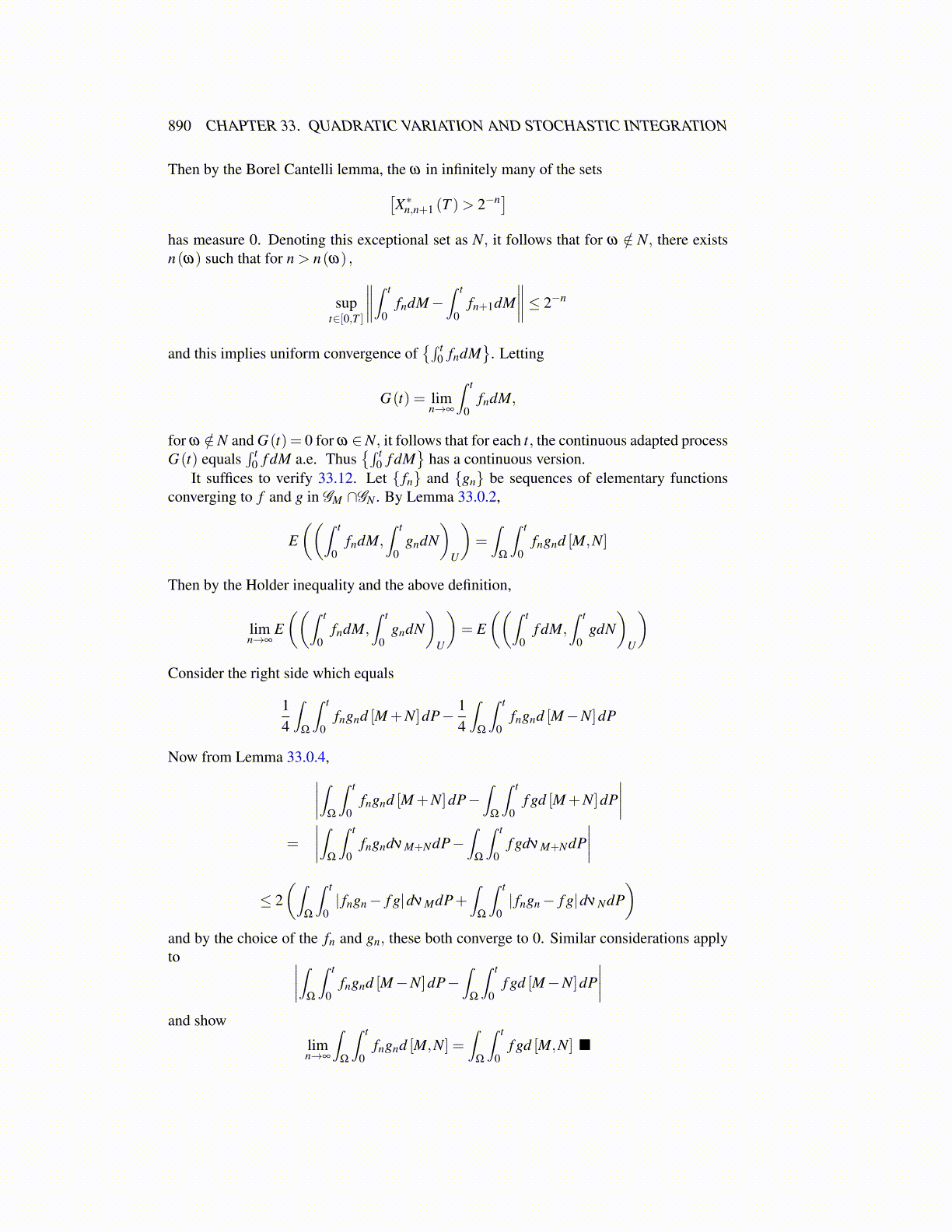
890 CHAPTER 33. QUADRATIC VARIATION AND STOCHASTIC INTEGRATION
Then by the Borel Cantelli lemma, the ω in infinitely many of the sets[X∗n,n+1 (T )> 2−n]
has measure 0. Denoting this exceptional set as N, it follows that for ω /∈ N, there existsn(ω) such that for n > n(ω) ,
supt∈[0,T ]
∥∥∥∥∫ t
0fndM−
∫ t
0fn+1dM
∥∥∥∥≤ 2−n
and this implies uniform convergence of{∫ t
0 fndM}
. Letting
G(t) = limn→∞
∫ t
0fndM,
for ω /∈N and G(t) = 0 for ω ∈N, it follows that for each t, the continuous adapted processG(t) equals
∫ t0 f dM a.e. Thus
{∫ t0 f dM
}has a continuous version.
It suffices to verify 33.12. Let { fn} and {gn} be sequences of elementary functionsconverging to f and g in GM ∩GN . By Lemma 33.0.2,
E((∫ t
0fndM,
∫ t
0gndN
)U
)=∫
Ω
∫ t
0fngnd [M,N]
Then by the Holder inequality and the above definition,
limn→∞
E((∫ t
0fndM,
∫ t
0gndN
)U
)= E
((∫ t
0f dM,
∫ t
0gdN
)U
)Consider the right side which equals
14
∫Ω
∫ t
0fngnd [M+N]dP− 1
4
∫Ω
∫ t
0fngnd [M−N]dP
Now from Lemma 33.0.4,∣∣∣∣∫Ω
∫ t
0fngnd [M+N]dP−
∫Ω
∫ t
0f gd [M+N]dP
∣∣∣∣=
∣∣∣∣∫Ω
∫ t
0fngndνM+NdP−
∫Ω
∫ t
0f gdνM+NdP
∣∣∣∣≤ 2
(∫Ω
∫ t
0| fngn− f g|dνMdP+
∫Ω
∫ t
0| fngn− f g|dνNdP
)and by the choice of the fn and gn, these both converge to 0. Similar considerations applyto ∣∣∣∣∫
Ω
∫ t
0fngnd [M−N]dP−
∫Ω
∫ t
0f gd [M−N]dP
∣∣∣∣and show
limn→∞
∫Ω
∫ t
0fngnd [M,N] =
∫Ω
∫ t
0f gd [M,N] ■